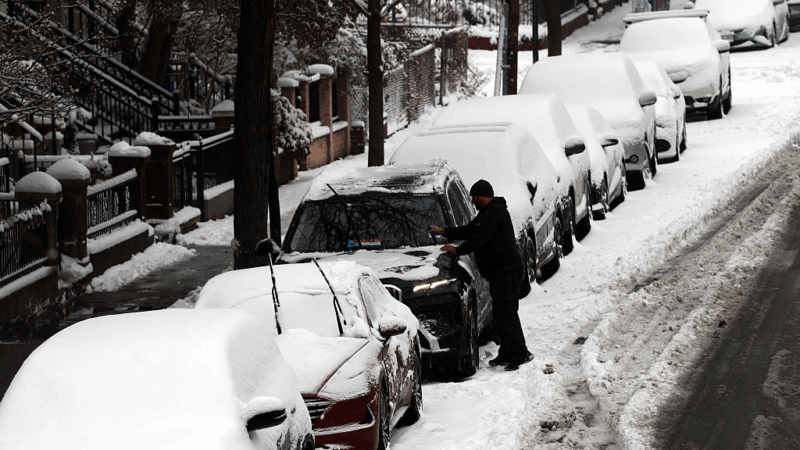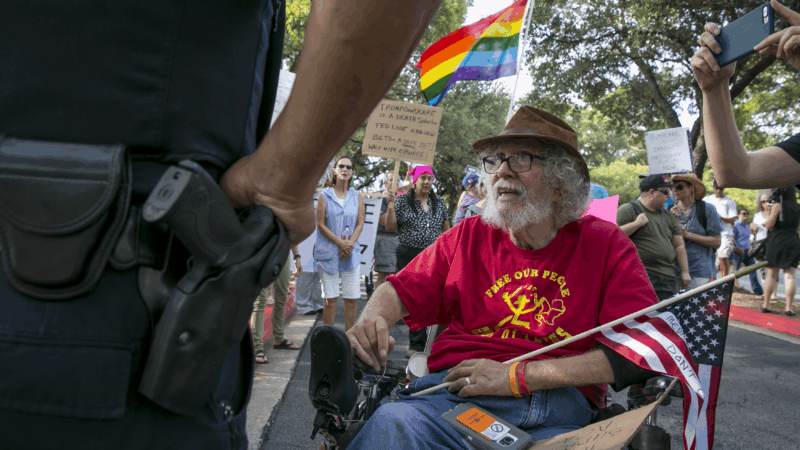Low ICU Capacity Could Affect Non-Coronavirus Patients The Most
Alabama’s ICU capacity has fallen to 19% as coronavirus cases continued to climb steadily across the state. That amounts to about 300 ICU beds of 1,600 available statewide. Alabama confirmed 787 new cases Friday, bringing the total to 28,583. While the number of hospitalizations has fluctuated slightly, overall it has trended upward since the pandemic began. That’s concerning to Dr. Don Williamson, president of the Alabama Hospital Association.
For more on the impact on hospitals, we spoke with Williamson.
How significantly is hospital capacity being squeezed across the state?
Depending on where you look, those numbers are better or worse. If you look in Huntsville or Birmingham, they may not have as many ICU beds as they normally would. They have plenty of beds available. If you looked at Tuscaloosa, if you looked at Dothan and if you looked at Montgomery, those ICU beds are in much, much shorter supply. Yesterday morning, for example, I think we had one or two available ICU beds in the Montgomery region. And the problem is those beds, by the time the [state] report is filled out, those beds may well already be filled because many of the hospitals were holding patients on ventilators in the ED [emergency department]. And as those beds in the ICU cleared out, patients from the ED could simply be moved to fill the beds.
What happens if some of the hospitals in these areas that are struggling reach capacity? What’s the ripple effect, and who feels the squeeze?
There are two things that happen. The first thing is that every hospital has a surge plan. Some of our hospitals have already implemented their surge plans. Early on in Auburn-Opelika, they converted other spaces that normally wouldn’t have been used for intensive care into intensive care beds. In the Montgomery area, hospitals have taken spaces that they might normally have used for cardiac care and converted them into intensive care spaces. We’ve seen surgical intensive care beds converted into COVID beds. So the capacity for expansion even in this tight environment exists, but it comes at a cost, and that cost is if you’re filling up beds you normally would use, say, for stroke or for cardiovascular postop care, it reduces your ability and your flexibility to provide some of that care. So it limits in some ways what hospitals can do. The effect on patients is — the thing I’ve heard from some Birmingham hospitals — is that non-COVID patients that would normally have been referred to Montgomery are being referred directly to Birmingham. So the impact is not so much on the COVID patients. The greater impact may be on non-COVID patients. I suspect patients who present with myocardial infarction, they’re still going to get really good care at a Birmingham hospital. The more likely scenario is that some elective surgeries or procedures either get delayed or they’re shifted to Birmingham.
Have we, in your view, gotten a handle on the pandemic here?
Oh, heavens no. We had 663 people in Alabama hospitals with confirmed COVID diagnoses yesterday. And we had 882 new cases reported yesterday. While that number is helpful in that it gives us some measure of the burden of disease, I think looking at simply the number of cases reported in a given day actually is not a very good measure. As an example, over the preceding two or three days, you had a decline in reported cases. Well, we didn’t see a corresponding decline in hospitalizations. Cases are more unstable. Hospitalizations are a much more stable and much more reliable measure of the burden of disease. And we’re simply seeing nothing that suggests a sustained decline in hospitalizations. We see day-to-day fluctuations that may be down one day, then it’s back up the next day. And if you look at the trend line, the trend line is is absolutely still going up. I’m not seeing anything that makes me think we have control of this outbreak. I think it is, I fear, one we’re going to be dealing with now well into the summer.
What are you most worried about in the coming weeks and months?
I worry a great deal about what it’s going to look like when we see individuals come back to school and college in the fall. What I’m now concerned about is that we, in essence, never get out of the first wave, that we maintain sustained transmission in Alabama through the summer, which so far we’ve not seen any effect of heat and sunshine and reducing transmission. Hopefully it will, but we’ve just not seen it yet. My great fear is that we have a coincidental outbreak of regular influenza on top of the already high burden of COVID-19. My real fear is the December, January, February window — if we are seeing a second wave or a heightened first wave of COVID-19, and we add on top of that the burden of regular influenza, that to me is the period when we run the greatest risk of seeing our hospitals overwhelmed in their capacity to respond.
This interview has been condensed and edited for clarity.
Jeffrey R. Holland, next in line to lead Church of Jesus Christ of Latter-day Saints, dies at 85
Jeffrey R. Holland led the Quorum of the Twelve Apostles, a key governing body. He was next in line to become the church's president.
Winter storm brings heavy snow and ice to busy holiday travel weekend
A powerful winter storm is impacting parts of the U.S. with major snowfall, ice, and below zero wind chills. The conditions are disrupting holiday travel and could last through next week.
Disability rights advocate Bob Kafka dead at 79
Bob Kafka was an organizer with ADAPT (American Disabled for Attendant Programs Today), a group which advocates for policy change to support people with disabilities.
‘It’s behind you!’ How Britain goes wild for pantomimes during the holidays
Pantomimes are plays based on a well-known story — often a fairy tale — which are given a bawdy twist. The audience is expected to join in throughout, shouting as loudly as they can.
Kennedy Center vows to sue musician who canceled performance over Trump name change
The Kennedy Center is planning legal action after jazz musician Chuck Redd canceled an annual holiday concert. Redd pulled out after President Trump's name appeared on the building.
Our top global photo stories from 2025: Fearless women, solo polar bear, healing soups
These stunning photos include a polar bear in a Chinese zoo, a teen in Zambia facing an uncertain future, Mongolian kids watching TV in a tent, a chef prepping a bowl of good-for-you soup.






